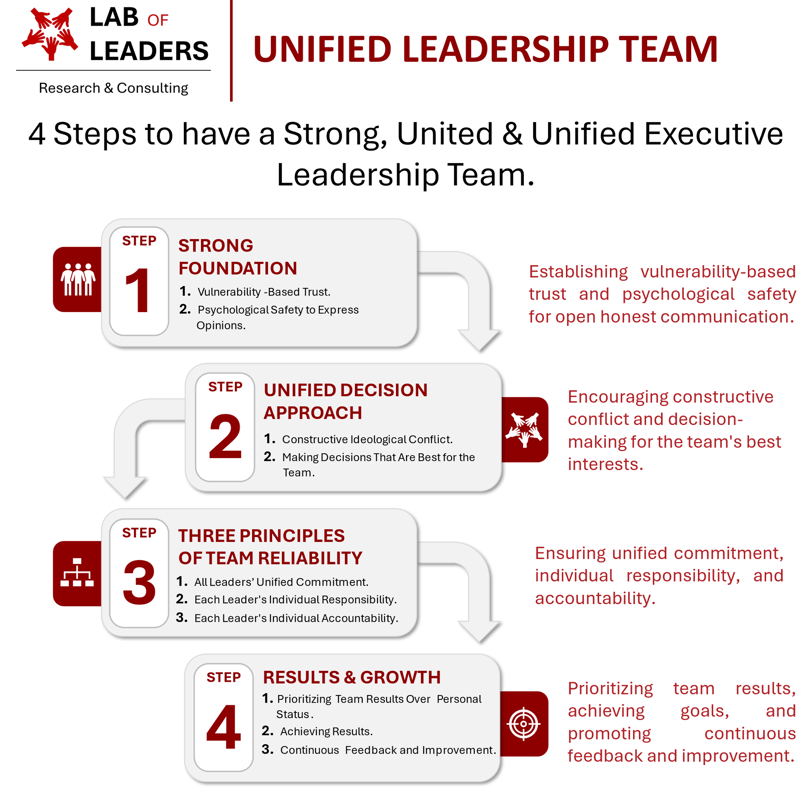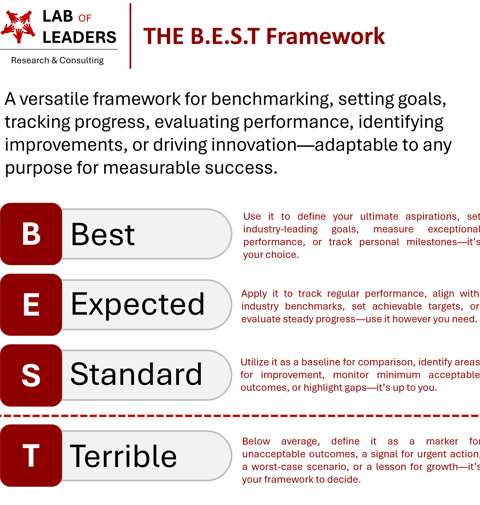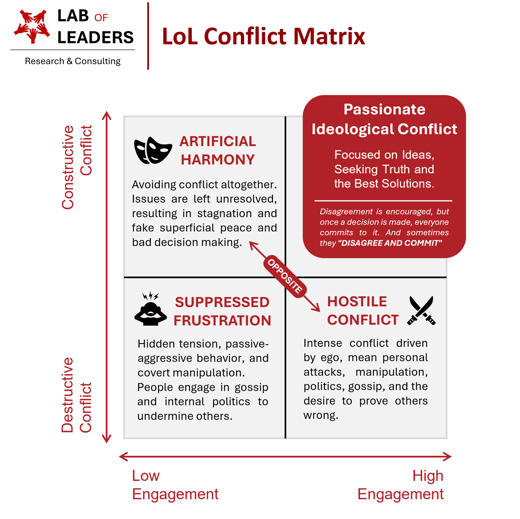Unlocking the Secrets of a Unified Leadership Team (ULT): The 4-Step Path to Sustainable Organizational Success
Imagine this: In one organization, leadership team meetings feel like an endless tug-of-war or worse boring. Trust is low, decisions are slow, high politics and manipulation and goals are missed. Now picture another organization where the executive team works seamlessly, ideas flow freely, and the team thrives on trust and collaboration and they have results consistently. The difference? A Unified Leadership Team (ULT). What if you could turn your executive team into a powerhouse of trust, reliability, and growth? That’s what the ULT framework offers. Let’s explore the four steps in detail—you’ll learn the why, the how, and the impact on your organization.
Abdullah MAQ
12/21/20246 min read


Step 1: Building a Strong Foundation
1.1. Vulnerability-Based Trust
Definition: Vulnerability-based trust occurs when leaders are transparent about their strengths, weaknesses, and mistakes. It fosters an environment of openness where team members feel safe sharing ideas and admitting challenges without fear of judgment.
Why It’s Important: Transparency builds deep, authentic connections, fostering collaboration and innovation. Without it, teams often operate in silos, missing opportunities for collective problem-solving and failing to address critical challenges efficiently.
Unified Example: During a strategy meeting, your CEO openly admits, “I don’t have all the answers to solve this issue.” This openness inspires other leaders to share insights and work collaboratively.
Ununified Example: A senior executive refuses to admit they’re overwhelmed with a project. This hesitation stifles team contributions and creates inefficiencies, as challenges go unaddressed and unresolved for too long.
1.2. Psychological Safety to Express Opinions
Definition: Psychological safety ensures every leader feels secure expressing their thoughts and opinions without fear of ridicule or punishment. It builds a culture of respect and promotes diverse, innovative problem-solving perspectives.
Why It’s Important: Teams that value psychological safety allow for more open communication, ensuring all voices are heard. This leads to innovative solutions and prevents groupthink, fostering creativity and stronger decision-making.
Unified Example: A junior executive confidently shares a bold idea during a brainstorming session. The leadership team discusses it, identifying its potential and implementing it for improved results.
Ununified Example: A junior leader hesitates to speak up due to fear of criticism. The team proceeds with traditional methods, missing opportunities for creative growth or meaningful organizational change.
Quadrant Breakdown
Artificial Harmony (Top-Left: Low Engagement, Constructive Conflict)
Description: This quadrant represents an environment where conflict is avoided entirely. Leaders and teams prioritize maintaining superficial peace, but underlying issues are ignored.
Consequences:
Results in stagnation, unresolved problems, and bad decision-making.
Creates a false sense of harmony that inhibits progress and innovation.
Why It's Harmful: By avoiding conflict, critical discussions never occur, leading to missed opportunities and flawed strategies.
Suppressed Frustration (Bottom-Left: Low Engagement, Destructive Conflict)
Description: This quadrant captures environments where hidden tension, passive-aggressive behaviors, and covert manipulation dominate.
Consequences:
Team members engage in gossip, internal politics, and attempts to undermine others.
Lack of transparency and collaboration creates a toxic culture.
Why It's Harmful: Suppressed frustration fosters resentment and damages team morale, ultimately harming organizational health and productivity.
Hostile Conflict (Bottom-Right: High Engagement, Destructive Conflict)
Description: Intense and destructive conflict driven by ego, personal attacks, manipulation, and a desire to prove others wrong.
Consequences:
Encourages unhealthy competition and division.
Wastes energy on power struggles rather than productive collaboration.
Why It's Harmful: Hostile environments create mistrust and impede teamwork, resulting in low productivity and high employee turnover.
Passionate Ideological Conflict (Top-Right: High Engagement, Constructive Conflict)
Description: This quadrant represents the ideal form of conflict where leaders and teams engage in healthy debates focused on ideas, not people. It emphasizes seeking the best solutions and constructive engagement.
Benefits:
Uncovers blind spots, challenges assumptions, and refines strategies.
Encourages innovation and leads to superior decision-making.
Why Passionate Ideological Conflict is Essential
Focus on Growth: This type of conflict is driven by curiosity, critical thinking, and the desire to find the best solutions, enabling teams to innovate and improve continuously.
Encourages Diversity of Thought: Passionate debates create an environment where diverse perspectives are valued, and all voices contribute to refining strategies.
Balances Engagement and Constructiveness: Unlike destructive forms of conflict, it fosters a culture of respect, transparency, and mutual commitment to organizational goals.
What is "Disagree and Commit"?
Definition: "Disagree and commit" means that team members or leaders are encouraged to voice their disagreements and debate ideas during the decision-making process. However, once a decision is made, everyone aligns and supports the outcome wholeheartedly, regardless of their initial stance.
Purpose:
Ensures that all ideas are considered, avoiding groupthink or superficial harmony.
Encourages collective ownership and accountability for decisions.
Example:
In a leadership meeting, two leaders disagree on a course of action. After a rigorous debate, a decision is made to follow one approach. Even the dissenting leader fully commits to the chosen strategy, ensuring team unity and execution.
Why "Disagree and Commit" Matters
Prevents Fragmentation: Without this principle, disagreements may linger and disrupt alignment during execution.
Builds Trust: Teams feel heard and valued during the decision-making process, fostering trust and collaboration.
Drives Results: Unified commitment ensures smoother implementation and better outcomes.
2.2. Making Decisions That Are Best for the Team
Definition: Unified leadership teams focus on making decisions that benefit the entire organization, not individual preferences or agendas. This requires alignment and prioritizing collective success over personal gain.
Why It’s Important: Selfless decision-making builds trust and ensures that the organization’s goals are met efficiently. Personal agendas can disrupt unity and negatively impact organizational outcomes.
Unified Example: Your operations manager supports switching to a new vendor recommended by the team, even though it wasn’t their preference. This decision improves efficiency and morale.
Ununified Example: A department head insists on using their preferred vendor despite team objections. This decision causes resentment and unnecessary costs for the organization.
Step 3: Applying the Three Principles of Team Reliability
3.1. All Leaders’ Unified Commitment
Definition: Unified commitment means every leader is dedicated to the team’s goals and values. It fosters a consistent approach where every decision reflects shared priorities and mutual understanding.
Why It’s Important: When leaders align their efforts, it eliminates confusion and establishes clear objectives. Lack of unified commitment can lead to misaligned priorities, reducing team effectiveness and trust.
Unified Example: Leadership agrees on weekly reviews to align on goals. This consistent commitment ensures focus and accountability across departments, fostering team unity.
Ununified Example: Leaders prioritize individual agendas over group objectives, leading to fragmented efforts and missed organizational milestones.
3.2. Each Leader’s Individual Responsibility
Definition: Individual responsibility requires leaders to own their roles and deliver on their commitments. It ensures that all leaders contribute meaningfully to the team’s success and growth.
Why It’s Important: Responsibility strengthens accountability and trust within the team. When leaders avoid responsibility, it causes delays and fosters a culture of blame, undermining team performance.
Unified Example: A leader acknowledges missing a project deadline and takes steps to rectify it. This accountability motivates others to follow suit and maintain high standards.
Ununified Example: A senior leader shifts blame for project delays to their team, creating frustration and eroding trust among colleagues.
3.3. Each Leader’s Individual Accountability
Definition: Accountability ensures that leaders regularly track their progress and deliver on promises. It fosters reliability and inspires trust across the executive team and the broader organization.
Why It’s Important: Regular accountability helps avoid bottlenecks and ensures projects are completed efficiently. Without accountability, teams may falter, leading to missed deadlines and reduced effectiveness.
Unified Example: Your project manager conducts weekly check-ins to ensure progress. This proactive approach keeps the team on track and prevents delays.
Ununified Example: A department head neglects follow-ups, resulting in misaligned efforts and failed deadlines, impacting the organization’s overall performance.
Step 4: Driving Results and Growth
4.1. Prioritizing Team Results Over Personal Status
Definition: Unified leaders prioritize team achievements over personal recognition, creating a culture of collaboration and mutual success. They focus on collective progress rather than individual accolades.
Why It’s Important: Prioritizing team results eliminates ego-driven conflicts, enhances collaboration, and fosters trust among team members. Leaders who prioritize personal status disrupt team unity and growth.
Unified Example: Your HR director publicly credits the team’s efforts for a successful recruitment drive, boosting morale and teamwork across departments.
Ununified Example: A senior leader takes all the credit for team achievements, demotivating colleagues and creating friction within the leadership team.
4.2. Achieving Results
Definition: Achieving results requires leadership teams to set clear objectives, execute plans effectively, and track progress. It emphasizes outcomes and avoids distractions that hinder organizational success.
Why It’s Important: Results drive organizational growth and demonstrate the effectiveness of leadership. Without a focus on results, teams risk stagnation and missed opportunities.
Unified Example: Your leadership team achieves record-breaking sales by aligning on ambitious yet achievable quarterly targets and consistently executing their plans.
Ununified Example: Goals are frequently missed due to disorganization and lack of clear execution strategies, hindering organizational growth.
4.3. Continuous Feedback and Improvement
Definition: Continuous feedback fosters a culture of learning by encouraging leaders to identify and act on areas for improvement. It ensures sustained growth and innovation within the team.
Why It’s Important: Feedback loops prevent stagnation by identifying blind spots and fostering adaptation. Without feedback, teams repeat mistakes and miss opportunities to evolve.
Unified Example: After completing a major project, your executive team holds a debrief session to discuss lessons learned and apply improvements to future initiatives.
Ununified Example: The leadership team avoids feedback sessions, leading to repeated mistakes and missed opportunities for growth and innovation.
Step 2: Adopting a Unified Decision Approach
2.1. Constructive Ideological Conflict


LAB OF LEADERS
Finding What Works, Simplified For Leaders
Contact Us
+601125101301
© 2024. All rights reserved.


